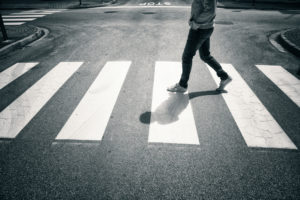Engineers at North Carolina State University (NCSU) have developed a new handle for infant car seats (ICSs) that makes it easier for parents to lift the seat out of a car – while retaining a firmer grip on the handle – making it less likely that the seat will be dropped.
“Many products that are designed for parents don’t take ergonomics into account, and the instructions are usually not very helpful,” says Michael Clamann, a Ph.D. student at NC State and lead author of a paper describing the research. “We wanted to see whether, by changing the angle of the ICS handle, we could make it easier on parents and safer for the baby. Our idea was that it would be easier to hold on to the seat, minimizing the risk of dropping it.” The idea was inspired by Clamann’s experiences as a parent.
The researchers based their new handle design on existing research that details which angles reduce “ulnar deviation,” or how much your wrist bends, and associated pressure in the carpal tunnel. This is important in terms of lifting tasks, because the further you bend your wrist, the weaker your grip.
The researchers tested the new design versus the traditional ICS handle with 10 different women of similar height. Participants were asked to lift the car seat out of a mock-up midsize sedan and place it into a stroller.
The team used sensors to measure muscular activity at the forearm and biceps and the wrist angle of the participants as they lifted the ICSs with different handle designs.
“Our angled handle lets people better position themselves over the car seat,” Clamann says, “and allowed them to use their biceps more than their forearm muscles. That’s an improvement, because our biceps are stronger than our forearms, and so are better able to bear weight. This is particularly important for smaller females lifting ICSs.” The participants also told researchers that the angled handle design was easier to lift.
The team also tested to see how foot placement – in the car or on the ground – affected the participants’ posture – and therefore their wrist angle. Such foot placement was previously recommended in the popular press literature regarding ICS handling.
“We found that placing your foot in the car to help lift the ICS allowed participants to use their biceps more and reduced how much they bent their wrists – giving them a firmer grip on the ICS,” says Kinley Taylor, an NC State graduate student and co-author of the paper. “However,” adds Clamann, “putting your foot in the car also increased the likelihood of hitting your head on the doorframe.”
The researchers plan to move forward with additional efforts to see how variations on the angled handle design affect ergonomics when used in different car designs, such as minivans, and for people who are significantly taller than the participants in this study.
The paper, “Comparison of infant car seat grip orientations and lift strategies,” is published online in Applied Ergonomics. The paper was co-authored by: Clamann; Taylor; Dr. David Kaber, a professor of industrial and systems engineering at NC State and director of the Occupational Safety & Ergonomics Program; and former NC State students Leah Beaver and Dr. Biwen Zhu.










Comments for this article are closed.